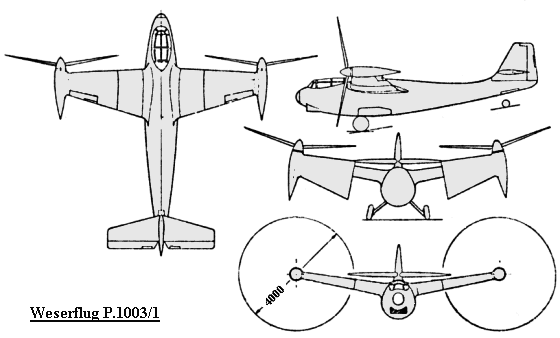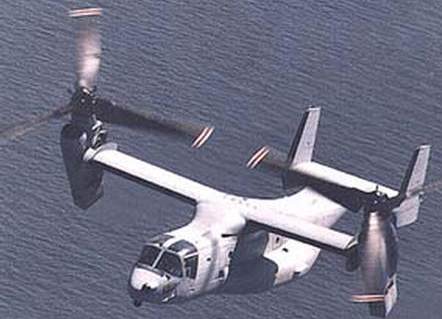 This VTOL (Vertical TakeOff and Landing) aircraft
project's design, by Weserflug, dates from 1938. The fuselage was fairly
conventional, with a standard tail unit. The real difference in this design
were the wings, which were hinged and tiltable about halfway along the
length of the wings. Mounted on each end of the wing was a nacelle featuring
a large diameter propeller. The wing was mounted high on the fuselage,
so that the propeller would have the necessary ground clearance when the
wing was tilted in flight position. A single Daimler-Benz DB 600 series
engine was located in the fuselage behind the cockpit, and drove both propellers.
The engine was fed by an air intake located in the nose. The main gear
retracted into the fuselage, and the rear tail wheel retracted beneath
the tail. A crew of two sat in a cockpit located in the top forward section
of the aircraft.
This VTOL (Vertical TakeOff and Landing) aircraft
project's design, by Weserflug, dates from 1938. The fuselage was fairly
conventional, with a standard tail unit. The real difference in this design
were the wings, which were hinged and tiltable about halfway along the
length of the wings. Mounted on each end of the wing was a nacelle featuring
a large diameter propeller. The wing was mounted high on the fuselage,
so that the propeller would have the necessary ground clearance when the
wing was tilted in flight position. A single Daimler-Benz DB 600 series
engine was located in the fuselage behind the cockpit, and drove both propellers.
The engine was fed by an air intake located in the nose. The main gear
retracted into the fuselage, and the rear tail wheel retracted beneath
the tail. A crew of two sat in a cockpit located in the top forward section
of the aircraft.
Although this was a very novel idea for an aircraft at this time, the concept never left the drawing board. A very similar design was later built by the United States as the Boeing V-22 Osprey, and began testing in 1989. Even today, the tilt-rotor concept is proving troublesome, and the fact that there would have had to be a very complex gearing arrangement for the Weserflug P.1103 (to tilt the wings and keep constant power to the large diameter propellers) would have proven a very difficult design hurdle.
